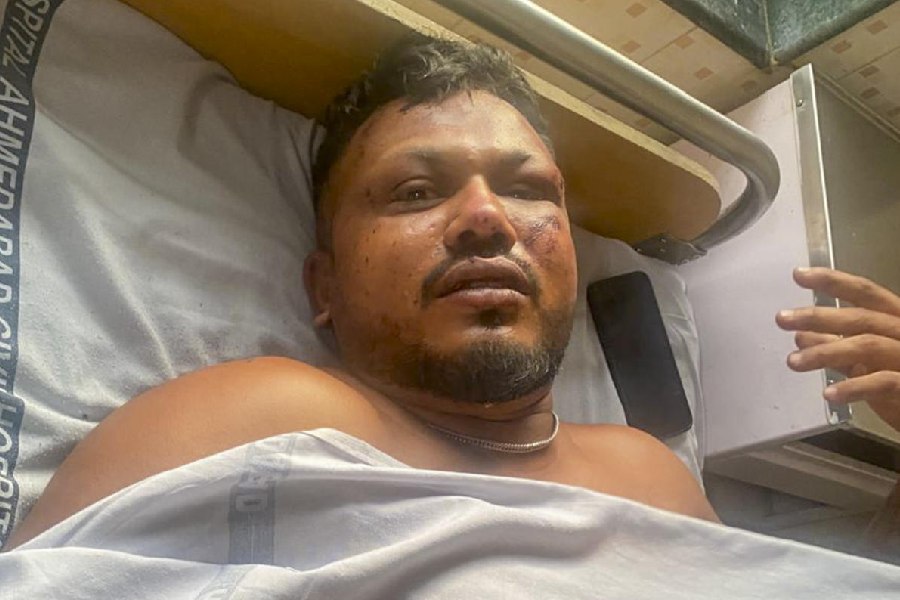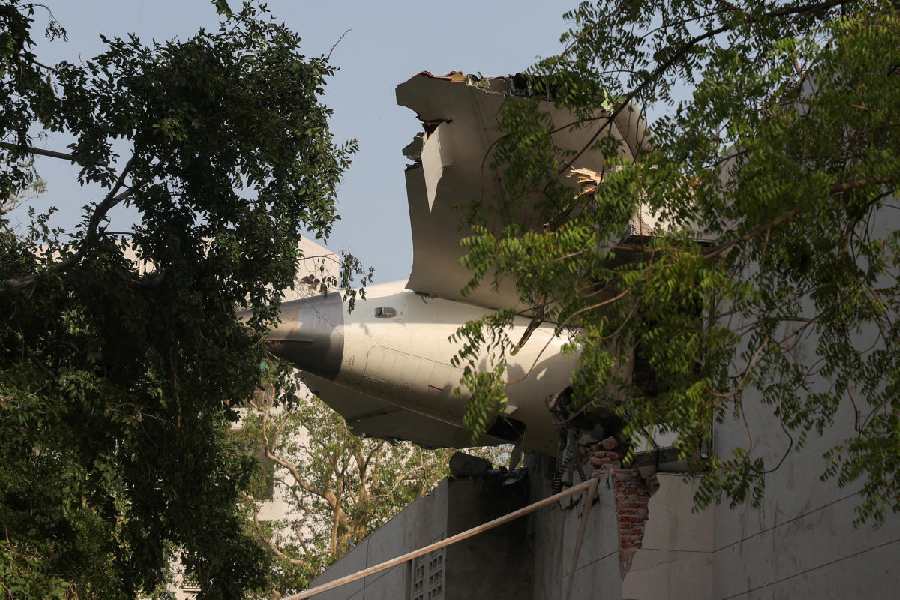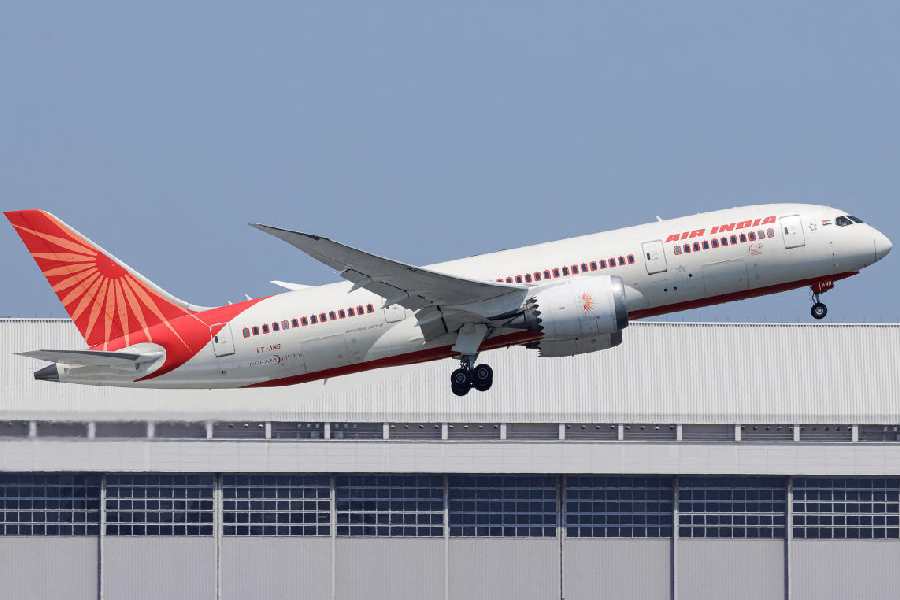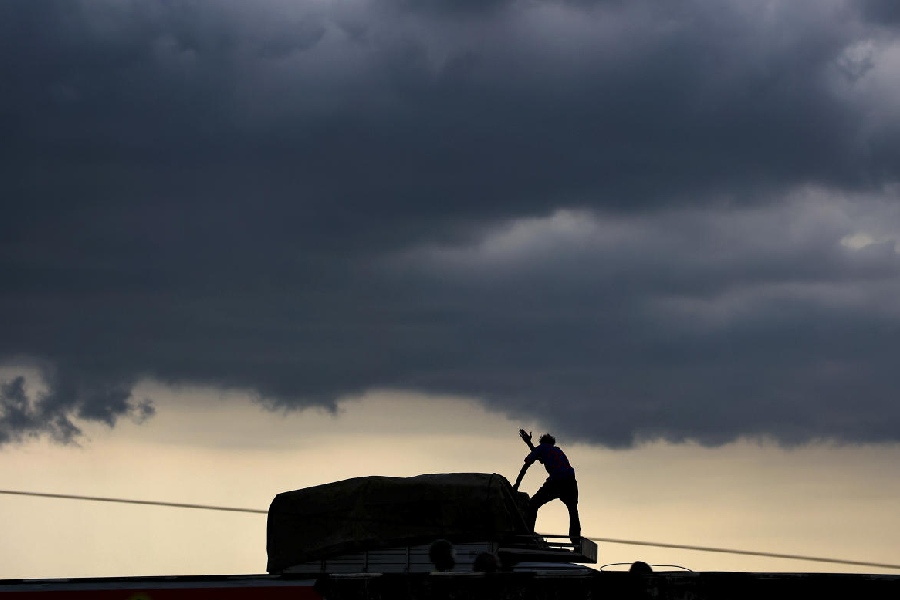 |
New Delhi, June 27: If Pratibha Patil is looking forward to visitations from the dead in the corridors of the cavernous Rashtrapati Bhavan, she should take a left turn from her future suite.
The presidential frontrunner can then step into the original master bedroom and, on a lucky night, probably come face to face with the ghosts of Lords Irwin, Willingdon, Linlithgow, Wavell and Mountbatten.
Not that the ghosts of the viceroys have been spotted by anyone till now, but Pratibha’s revelation yesterday about her conversation with the spirit of the founder of a sect has raised the tantalising possibility of the new President managing what others could not.
Swirling among the tales behind the Jaipur Column in the Rashtrapati Bhavan forecourt are stories of idiosyncratic Presidents and eccentric presidential staff.
An occasional rumour among Rashtrapati Bhavan staffers who have served in the President’s Bodyguard also mentions eerie sounds that whoosh through the mansion and its Mughal Gardens on dark winter nights.
In no official or unofficial account of the building with 340 rooms, however, are ghosts mentioned. India’s presidential palace is not haunted.
“I have known the building since my childhood,” says artist and photographer Ram Rahman whose father was in the Central Public Works Department (CPWD). “I know of people who have died inside the Rashtrapati Bhavan. I have never heard of ghosts.”
Rahman probably hasn’t heard enough. Because Pratibha, who is expected to be Rashtrapati and who is backed by the largest electoral combine that includes the Marxists, is already talking of her brush with the spirit as a “pleasant experience”.
“I think people carry their spooks within themselves,” scoffs Aman Nath, historian and conservationist whose coffee-table book A Dome Over India: Rashtrapati Bhavan is a chronicle of the building, its occupants and its architecture. “If it (the Rashtrapati Bhavan) is full of ghosts, I hope they scare the politicians away.”
Pratibha has claimed that Dada Lekhraj, the founder of the Prajapita Brahma Kumaris Ishwariya Vishwa Vidyalaya or the Brahma Kumaris World Spiritual University, visited her in the embodiment of Hridaymohini, the head of the sect, and told her she was cut out for much bigger things in life than Rajasthan governor. This was in Mount Abu where the sect is headquartered. Dada Lekhraj, born in 1876, died 38 years ago.
In the Brahmakumaris’ way of life, such contacts are not strange. The founder of the sect himself experienced them.
The official website of the sect says: “In 1936, at the age of 60, Dada Lekhraj began getting several trance-like visions. In one such vision, he saw Vishnu and various forms of Narayana. In another, he saw awful scenes of destruction. He felt that a voice, in one such vision, was telling him that he would be instrumental in laying the foundation of a new world order based on peace and a spirit of brotherhood.”
Among followers, Pratibha’s premonition would evoke little surprise. But when it comes from the woman who would be President, the statement must raise questions on what kind of personality will be India’s head of state.
President A.P.J. Abdul Kalam himself is also no stranger to the Brahmakumaris. He was felicitated at their headquarters in Mount Abu on April 28, 2006. He used the platform to urge the volunteers to raise social awareness.
“One of the important areas where I would like the BK to contribute is in the area of educating the people against female child foeticide which is prevalent in many parts of the country,” he told his audience in Mount Abu.
Science and superstition have intermingled in India at several levels. An Indian Science Congress some years back was inaugurated after a trip by the organisers to seek the blessings of Lord Venkateswara in Tirupati Tirumala Devasthanam.
But Kalam has rarely exhibited religious superstition of any kind publicly. He has frequently -- even among defence scientists -- spoken in philosophical terms of attaining a higher consciousness.
But many of his predecessors -- and it is eminently possible that his successor, too, -- would not display detachment from religion and superstition.
When the first Indian occupant of Rashtrapati Bhavan -- Chakravarthi Rajagopalachari as governor-general -- moved the family quarters from the left wing to the right wing, it was not out of superstition.
Lord Mountbatten and the viceroys lived in the left wing. The maid-in-waiting lived in the right. Aman Nath says Rajagopalachari wanted to make the point when he took over that India was transforming into a sovereign democracy. The left wing was henceforth to be used by state guests.
But the first President, Rajendra Prasad’s wife was “much more orthodox”, says Nath. She wanted to have fresh cow’s milk every morning. So cows were kept in the toilets in the left wing used by former viceroys. The toilets were filled with fodder so that the cows gave nutritious milk.
More recently, says Nath, former President Shankar Dayal Sharma exhibited greater belief in the supernatural. He used to have a havan every morning to ward off evil spirits. Engineers and caretakers were worried that the smoke that rose would discolour the magnificent ceiling. Later, the daily ritual was moved to an open verandah.
The smoke has by now risen into thin air.











